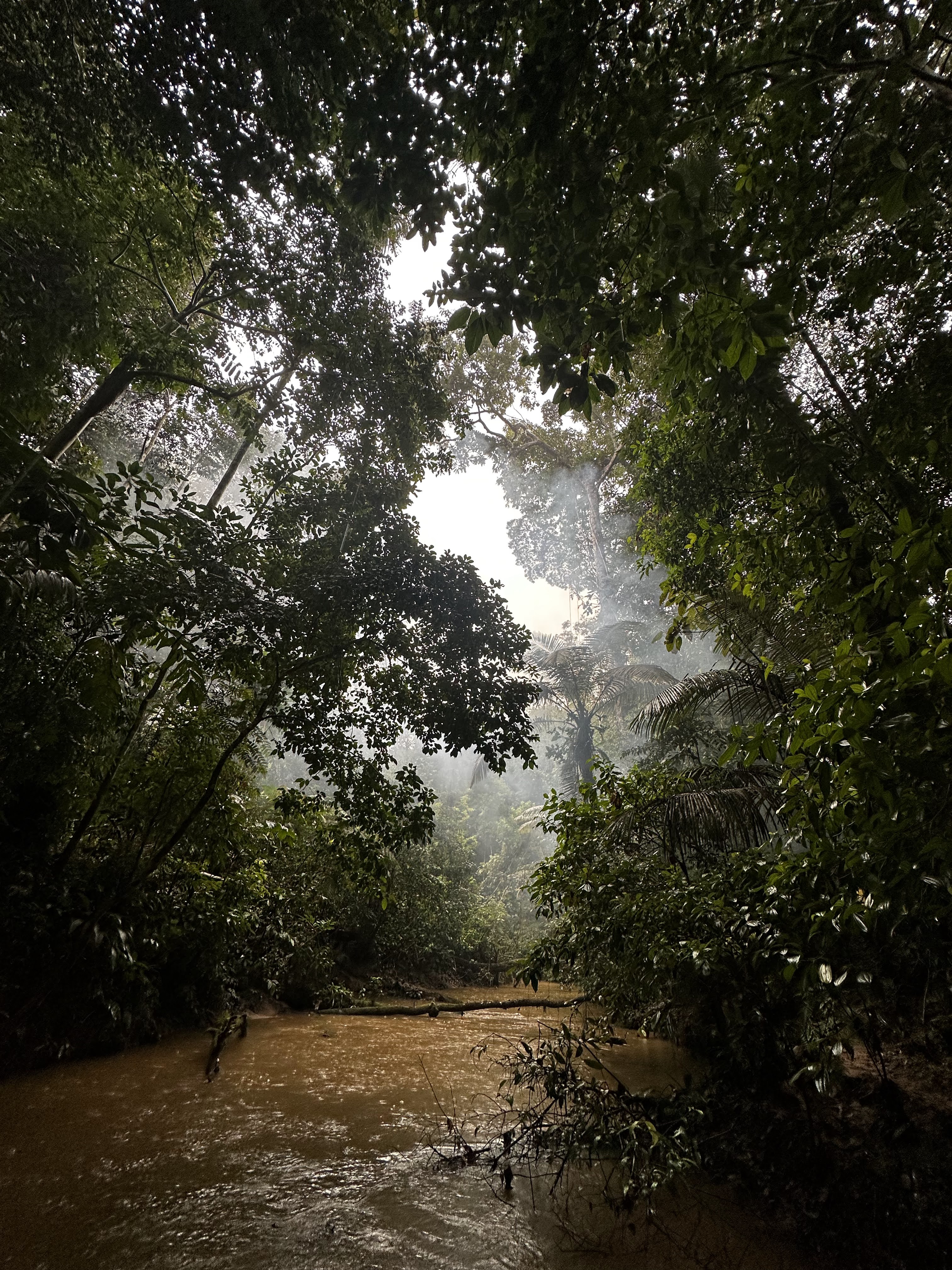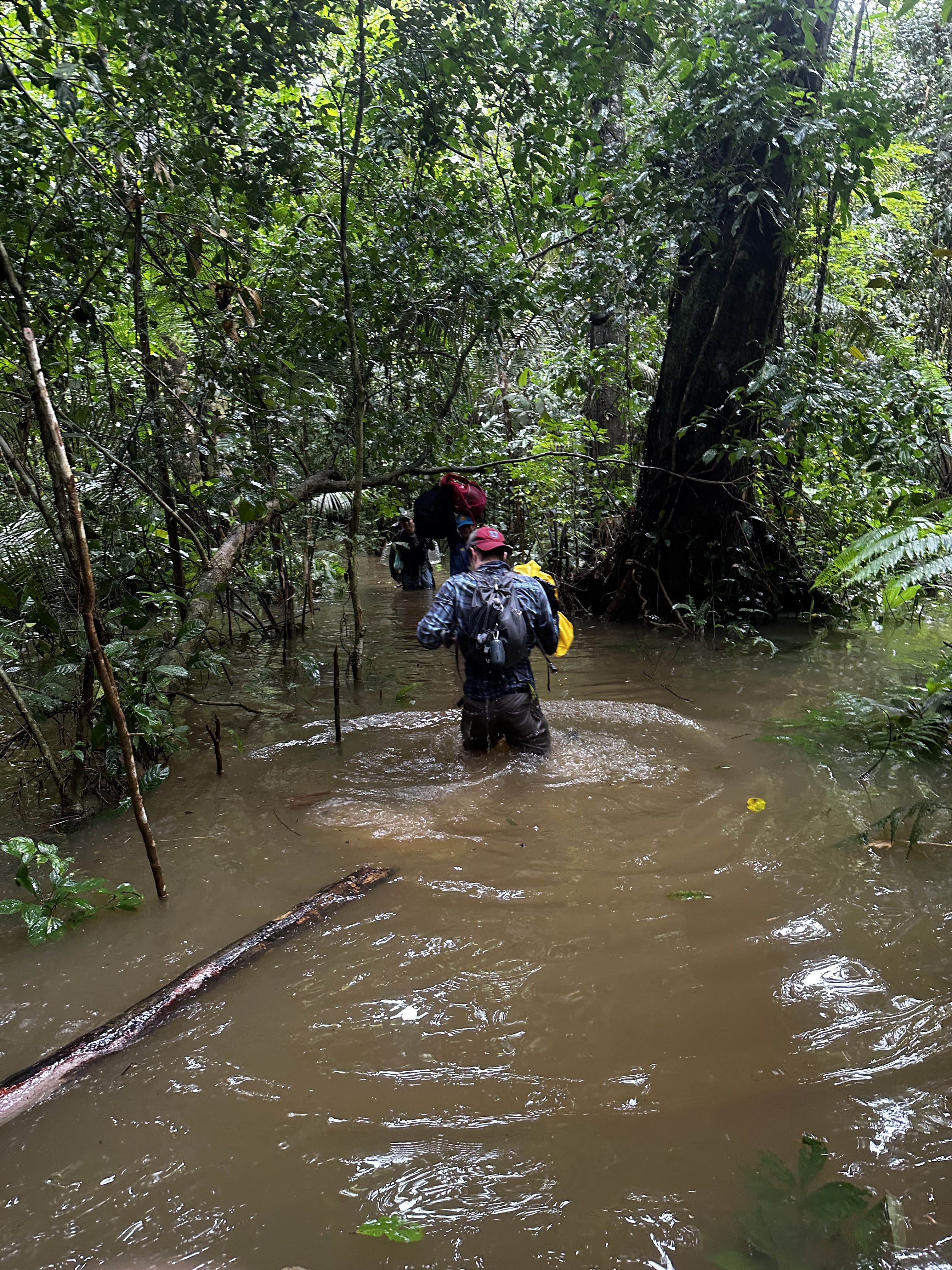the most remote place I've ever been
NOTE: this post is a work-in-progress, and will not make complete sense yet :)
During my final year of college, my friend Kyle and I made the impulsive decision to book flights to Colombia to visit the Amazon rainforest - about 10 days before said flights departed. Not the most last-minute flight I’ve bought, but still a pretty ambitious timeline considering the destination. We then went into panic mode, scrambling to get the necessary vaccines, anti-malarial medications, and supplies we’d need.
On our way to Colombia, we ended up having quite a long layover in Mexico City, so we stashed our bags and grabbed a couple buses towards the downtown area. One of the buses ended up being the wrong one, so after being dumped somewhere random, wandering around trying to get to several metro stations that all ended up being abandoned, we gave up and called an Uber. That took us to a really cool central square, where we had some awesome street tacos, listened to some live mariachi music, and wandered around for a while longer until we needed to get back to the airport.
Next stop, Bogota. We spent an amazing few days there, before boarding a domestic flight to an isolated town called Leticia. Leticia is not connected by road to the rest of Colombia, and so is only accessible by air or water, which is pretty wild.
Upon landing in Leticia, the heat and humidity immediately hit like a truck - a marked contrast to the cool mountain air of Bogota. The airport is close enough to the town that you can walk between them, which we did. It’s definitely a novel experience to do that; there aren’t too many places you can.
After decompressing at our hostel for a minute, we started wandering around the town. This was quite the perspective-shifting experience for me, as things were incredible different there. Here’s part of the town we walked through:

Due to massive seasonal fluctuations in water levels, many structures are built on stilts like these houses.
Eventually, we made our way to a busy market area down by the river, and got stopped by a friendly dude named Juan Carlos. He wanted to take us out on the river for sunset. Initially we were wary, but eventually decided to take him up on his offer. We walked out onto a dock-like structure through a maze of precariously-balanced wooden planks, where he had a small boat waiting. Juan slowly motored us out into the Amazon, but first pulled alongside an isolated shack alongside the river. For a heart-stopping second, I thought we’d screwed up, and were about to be robbed. It turned out we were just stopping to grab a two-liter soda bottle filled with gas. We reached the middle of the river, briefly crossing into Peru, and listened to Juan tell us about the river, the surrounding area, and life in Leticia. I followed along as best I could (he only spoke Spanish), and was encouraged to discover I wasn’t completely lost.

Wandering through Leticia was a really interesting experience. There’s definitely a tourist presence, but nothing like most other places I’ve been. Tourism here just feels a little different, and almost all the tourists speak Spanish.
The next morning, we woke up and headed down to the docks again to take another boat down the river to a small town called Santa Sofia. As previously mentioned, there aren’t too many roads in the area, and traveling on the river is the main way people seemed to get around. After a pleasant few hours on the river, we got off the boat and walked to the town with Francisco, a guy close to our own age who happened to be the mayor of Santa Sofia and four other surrounding communities. He told us a little bit about the communities there and we learned just how small Santa Sofia actually is, with a population of only 800 people.
Stepping into the village itself almost felt like going back in time, with modern touches - like a cell tower - that seemed strangely incongruous with the otherwise simple surroundings. We later learned that this cell tower only provided coverage during certain hours of the day, when the power was on. It was an eye-opening experience to be somewhere where electricity was a luxury not taken for granted.
As dusk started to fall in the jungle, it was time to make the last part of our journey to the reserve itself. With flashlights in hand, we made our way to a small boat pulled up against an offshoot of the river that ran near the town. We loaded our backpacks and ourselves into the boat, and we were off. By this time, it was quite dark, and the huge trees surrounding us cast eerie shadows as we wound our way through this narrow side channel of the Amazon. The chirp of insects was occasionally punctuated by yells of “abajo!” as we ducked underneath low-hanging branches and vines. At times, the jungle was so dense it felt like we were traveling through a tunnel, and I worried our boat would get stuck. Eventually, our guides pulled the boat up to the beginning of a narrow path through the trees. We changed into heavy-duty rubber boots, and hiked through the (by this time, pitch-black) jungle for a while longer until we reached the hostel. Between the incredibly foreign surroundings and the darkness, this whole journey had felt incredibly surreal.
I’m always amazed at the variety of fruits and vegetables that exist beyond what’s common in the United States. We ate a delicious fruit called “sapote”, which tasted like a combination of a mango and a pumpkin. Who even knew that existed?
It was finally time for our real adventure. Before beginning our trek in earnest, we prayed with our guides for protection at some of the largest trees I’d ever seen - guardians of the jungle. We also stopped for a little vine climbing.

We also learned that a certain type of ant is an excellent natural insect repellent (unfortunately, one that only lasts for 15-ish minutes). We found thousands of these ants covering their home, a nest-like structure made of hardened mud attached to a tree. To apply, we just placed our hands on the ant nest, waited a few seconds for hundreds of ants to crawl on our hands, and then rubbed our hands together, killing the ants and spreading the repellent. Pretty wild.
After such a long walk in the rain, this was some of the best food I’ve tasted (also, seriously impressive that our guide managed to find fuel and start a fire in these conditions).

The amount of water here is truly wild. With only a few hours of rain, the river we camped next to rose at least a meter, if not more. Here’s a picture:

And a glimpse into our camp setup:

We woke up the next day, and trekked farther into the jungle. We found and ate some wild cacao fruit, which was super tasty. We also ate some some sort of worm our guide found inside a nut. It wasn’t quite as tasty, unfortunately.
Walking through the jungle is a wild feeling, especially this second day. The paths we’re on feel even less worn, and we often have to wait for our guide to machete a path through the dense vegetation. In Kyle’s words, “we’re just following a random guy who only speaks Spanish as he chops a path through the jungle in incomprehensible ways.” Kinda amusing to think about it that way.
We had another solid dinner of chicken and rice, although I have to say, it was a little concerning eating chicken 36+ hours into a backpacking trip without refrigeration… oh well, my digestive problems didn’t manifest until the plane ride home, so can’t complain. (Can’t say the same for Kyle though…) He tells me getting up five times in the middle of the night in the middle of the Amazon jungle is not pleasant, and comes with serious risk of being eaten by god-knows-what.
On our way back to the reserve, the incessant rain had completely flooded the path we originally took. After quite a lot of backtracking and more than a few false starts, we found a path that wasn’t *too* flooded.
On our way back, we
After returning to Leticia, we thought it would be fun to go check out Brazil. The Brazilian-Columbian border divides Leticia from its sister city, Tabatinga. Crossing the border is simple, and is as simple as walking down the street. In Tabatinga, we found some incredible acai, and tried a few Brazilian snacks from the grocery store. It was strange needing to change money before these purchases.


I got a compliment from one of the other travelers for not being scared to just let rip with completely wrong Spanish that people somehow understand, so I guess that’s a win? I’ve been kinda forced to do that on this trip, which has been really fun, and really good for my language abilities. A majority of the other places I’ve been when people hear my Spanish they immediately switch to English, so it was nice to discover I can in fact speak a useful amount. Anyway, that’s all for now. This was definitely one of the wilder, more perspective-shifting travel experiences I’ve had.